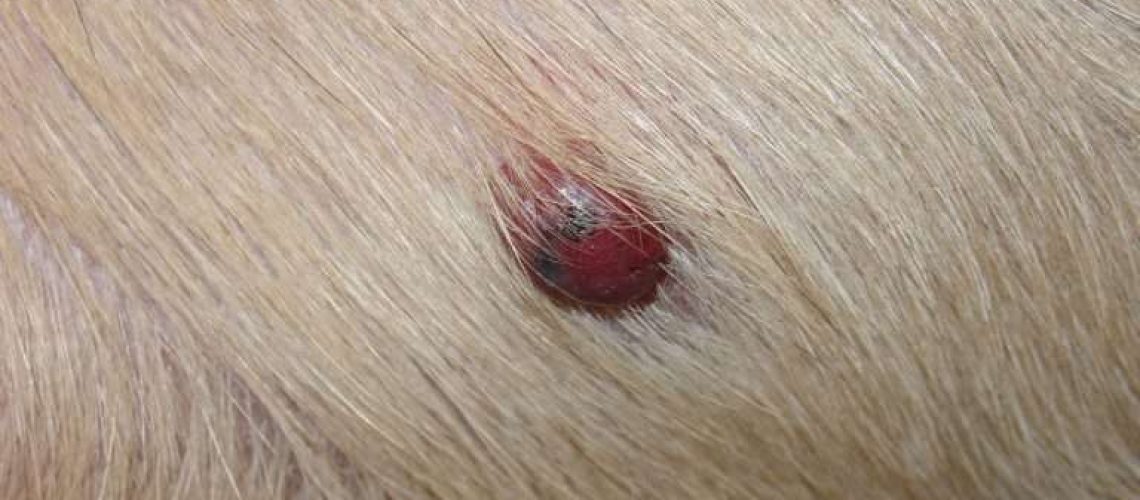Key Takeaways:
- Hemangiosarcoma is a highly aggressive and malignant cancer that commonly affects dogs.
- It primarily originates in the blood vessel walls and spreads rapidly to different organs, particularly the spleen, liver, and heart.
- Early detection of hemangiosarcoma is challenging as it often remains asymptomatic until it reaches an advanced stage.
- Surgical removal of the tumor along with chemotherapy may be recommended as a treatment option, although the prognosis is generally poor.
- Regular check-ups, monitoring for any unusual symptoms or behavior changes, and maintaining a healthy lifestyle can help in early detection and management of hemangiosarcoma in dogs.
Are you a dog lover? If so, then understanding the topic of hemangiosarcoma in dogs is essential for providing the best care and protection for your furry friend. Hemangiosarcoma is a highly aggressive and often fatal cancer that primarily affects dogs.
By delving into this subject, you will gain valuable knowledge about the signs, symptoms, and treatment options for this disease, allowing you to potentially save your dog's life. Join us as we explore the world of hemangiosarcoma in dogs and empower ourselves with the information needed to keep our beloved pets healthy and happy.
Understanding Hemangiosarcoma in Dogs: A Common Cancer
Hemangiosarcoma is a type of cancer that commonly affects dogs. It originates from the cells lining the blood vessels and can occur in various organs, such as the spleen, liver, or heart. This cancer is often aggressive and can spread quickly to other parts of the body.
When a dog has hemangiosarcoma, tumors form in their blood vessels, causing them to become weak and prone to rupture. This can lead to internal bleeding, which is why hemangiosarcoma is often diagnosed when a dog suddenly collapses or shows signs of weakness and pale gums.
Causes of Hemangiosarcoma
The exact cause of hemangiosarcoma in dogs is still unknown. However, certain factors may increase a dog's risk of developing this cancer. These include:
- Breed: Certain breeds, such as German Shepherds and Golden Retrievers, are more susceptible to hemangiosarcoma.
- Age: Hemangiosarcoma typically affects middle-aged to older dogs.
- Genetics: There may be a genetic predisposition for some dogs to develop this type of cancer.
- Environmental factors: Exposure to certain chemicals or toxins may play a role in the development of hemangiosarcoma.
Treatment Options for Hemangiosarcoma
Treating hemangiosarcoma in dogs can be challenging due to its aggressive nature. The primary treatment approach is usually surgery to remove the tumor and affected organs if possible. In some cases, chemotherapy or radiation therapy may also be recommended to target any remaining cancer cells and slow down the progression of the disease.
It's important to note that while treatment can help improve a dog's quality of life and potentially extend their lifespan, the prognosis for dogs with hemangiosarcoma is generally poor. The cancer often spreads quickly, making it difficult to completely eliminate all cancer cells.
How is Hemangiosarcoma Diagnosed in Dogs: Recognizing the Signs
Diagnosing hemangiosarcoma in dogs can be challenging because its symptoms are often vague and nonspecific. However, there are some signs that may indicate the presence of this cancer:
- Sudden weakness or collapse
- Pale gums
- Rapid breathing or difficulty breathing
- Abdominal swelling or distention
- Lack of appetite
The Diagnostic Process
If your dog shows any of these symptoms, it's essential to seek veterinary attention promptly. The diagnostic process typically involves a combination of physical examination, blood tests, imaging tests (such as X-rays or ultrasounds), and sometimes a biopsy to confirm the presence of hemangiosarcoma.
Your veterinarian will carefully evaluate your dog's overall health and conduct various tests to determine if they have hemangiosarcoma and identify the affected organs. Early detection is crucial for providing appropriate treatment options and improving your dog's chances of managing the disease effectively.
Tips for Pet Owners
If you notice any unusual signs or changes in your dog's behavior or health, it's always best to consult with a veterinarian. Regular check-ups and screenings can also help detect any potential health issues early on, including cancers like hemangiosarcoma. Remember to provide your dog with a balanced diet, regular exercise, and a stress-free environment to support their overall well-being.
Treating Hemangiosarcoma in Dogs: Available Options for Hope
Surgery: Removing the Tumor
Surgery is often the primary treatment option for dogs diagnosed with hemangiosarcoma. During surgery, the veterinarian will aim to remove as much of the tumor as possible. This procedure may involve removing a portion of the affected organ or even performing a complete organ removal, depending on the location and extent of the tumor. While surgery can be successful in removing visible tumors, it may not address microscopic cancer cells that have already spread to other parts of the body.
Chemotherapy: Attacking Cancer Cells
In addition to surgery, chemotherapy is commonly used to treat hemangiosarcoma in dogs. Chemotherapy involves administering powerful drugs that target and kill cancer cells throughout the body. These drugs can be given orally or through intravenous injections. Chemotherapy is often recommended after surgery to help eliminate any remaining cancer cells and reduce the risk of recurrence. While chemotherapy can cause side effects such as nausea and fatigue, it has shown promising results in prolonging survival time and improving quality of life for dogs with hemangiosarcoma.
Targeted Therapies: A New Approach
Researchers are also exploring targeted therapies for treating hemangiosarcoma in dogs. These therapies focus on specific genetic mutations or molecular pathways that are involved in the development and progression of cancer. By targeting these specific abnormalities, targeted therapies aim to inhibit tumor growth and improve outcomes for affected dogs. While still in early stages of development, targeted therapies hold great promise for more effective and personalized treatment options in the future.
Palliative Care: Improving Quality of Life
For dogs with advanced stages of hemangiosarcoma where curative treatments may not be feasible, palliative care plays a crucial role in managing symptoms and improving quality of life. Palliative care focuses on providing pain relief, managing side effects, and enhancing overall comfort for the dog. This may involve medications to alleviate pain, dietary adjustments, and supportive therapies such as acupuncture or physical therapy. The goal of palliative care is to ensure that the dog's remaining time is as comfortable and enjoyable as possible.
Hemangiosarcoma and Dog Breeds: Who is at Risk?
Breeds Prone to Hemangiosarcoma
Certain dog breeds have a higher predisposition to developing hemangiosarcoma compared to others. These breeds include German Shepherds, Golden Retrievers, Boxers, Labrador Retrievers, and Bernese Mountain Dogs. While these breeds are more susceptible, it's important to note that hemangiosarcoma can occur in any breed or mixed-breed dog.
Age and Gender Factors
Hemangiosarcoma typically affects middle-aged to older dogs, with the average age of diagnosis ranging from 8 to 10 years old. However, it can also occur in younger dogs. In terms of gender, male dogs tend to have a slightly higher incidence of hemangiosarcoma compared to females.
Genetic Factors: The Role of Heredity
Genetics may play a role in the development of hemangiosarcoma in certain dog breeds. Research suggests that specific genetic mutations or variations may increase the risk of developing this cancer. Understanding these genetic factors can help identify high-risk individuals within susceptible breeds and potentially lead to targeted preventive measures in the future.
Environmental Factors: Potential Influences
While genetics play a significant role in determining susceptibility to hemangiosarcoma, environmental factors may also contribute. Exposure to certain chemicals or toxins over an extended period could potentially increase the risk of developing this cancer. However, further research is needed to fully understand the impact of environmental factors on hemangiosarcoma development in dogs.
Preventing Hemangiosarcoma in Dogs: Tips for Responsible Pet Owners
Regular Veterinary Check-ups
One of the best ways to prevent or detect hemangiosarcoma early is through regular veterinary check-ups. Schedule routine visits with your veterinarian, who can perform thorough physical examinations and recommend appropriate screenings or tests if necessary. Early detection allows for prompt intervention and potentially better treatment outcomes.
Maintaining a Healthy Lifestyle
Providing your dog with a balanced diet, regular exercise, and a stress-free environment can contribute to overall health and potentially reduce the risk of developing hemangiosarcoma. A healthy immune system plays a crucial role in fighting off cancer cells, so ensuring your dog receives proper nutrition and mental stimulation is essential.
Avoiding Known Carcinogens
Certain substances have been linked to an increased risk of cancer in dogs. Avoid exposing your pet to known carcinogens such as tobacco smoke, pesticides, herbicides, and other toxic chemicals whenever possible. Minimizing exposure to these harmful substances can help reduce the likelihood of developing hemangiosarcoma.
Spaying/Neutering: Potential Benefits
Spaying or neutering your dog may offer some protective benefits against certain types of cancers, including hemangiosarcoma. While more research is needed to fully understand the relationship between spaying/neutering and cancer prevention, discussing this option with your veterinarian can provide valuable insights into potential health advantages for your dog.
Ongoing Research and Clinical Trials for Hemangiosarcoma in Dogs: Seeking a Cure
Advancements in Immunotherapy
Immunotherapy, a treatment approach that harnesses the power of the immune system to fight cancer, is an area of active research for hemangiosarcoma in dogs. Scientists are exploring various immunotherapeutic strategies, such as vaccines and immune checkpoint inhibitors, to stimulate the immune response against cancer cells. These advancements hold promise for more targeted and effective treatments in the future.
Novel Drug Therapies
Researchers are continuously investigating new drug therapies specifically designed to target hemangiosarcoma in dogs. These drugs aim to disrupt the growth and spread of cancer cells while minimizing side effects on healthy tissues. Clinical trials are underway to evaluate the safety and efficacy of these novel drug therapies, providing hope for improved treatment options.
Genomic Studies: Unraveling Molecular Mechanisms
Genomic studies play a crucial role in understanding the underlying molecular mechanisms of hemangiosarcoma development and progression. By analyzing genetic mutations and alterations associated with this cancer, researchers can identify potential therapeutic targets and develop personalized treatment approaches. Genomic studies have already provided valuable insights into the biology of hemangiosarcoma and continue to drive advancements in its management.
Collaborative Efforts: Sharing Knowledge
In the fight against hemangiosarcoma, collaboration among scientists, veterinarians, and pet owners is essential. Through collaborative efforts, knowledge sharing, and participation in clinical trials, researchers can gather data more efficiently and accelerate progress towards finding a cure for this devastating disease. Pet owners can contribute by staying informed about ongoing research initiatives and considering enrollment in clinical trials when appropriate.
In conclusion, hemangiosarcoma is a dangerous type of cancer that affects dogs. It is important for dog owners to be aware of the signs and symptoms and to seek veterinary care if they suspect their dog may have this disease.
What is the life expectancy of a dog with a hemangiosarcoma?
The prognosis for dogs with hemangiosarcoma is not promising, even when the tumor is detected and treated promptly. Data indicates that the average survival time for dogs with surgery alone is one to three months, while the average survival time for dogs with surgery and chemotherapy is five to seven months.
What are the signs of hemangiosarcoma in dogs?
Signs of illness can range from subtle symptoms like occasional lack of energy or weakness, reduced interest in physical activity and food, to more severe symptoms like sudden collapse, potentially accompanied by a swollen belly, severe breathing problems, and pale gums.
Are dogs in pain with hemangiosarcoma?
Approximately 66% of cases of spleen cancer and 40% of cases of heart cancer are classified as HSA (hemangiosarcoma). The spleen's main function is to filter red blood cells, which is why it is a common location for HSA tumors. Hemangiosarcoma typically develops slowly and is often asymptomatic, causing little to no pain in dogs who may not display any noticeable symptoms.
How quickly does hemangiosarcoma spread in dogs?
For the majority of dogs with hemangiosarcoma, surgery is the main form of treatment, regardless of where the initial tumor is located. However, it is common for the cancer to spread to other parts of the body within 1-3 months after surgery. Administering chemotherapy after surgery can potentially slow down the spread of the cancer.
What happens when a dog is dying of hemangiosarcoma?
Some indications that a dog may be dying from hemangiosarcoma include a rapid heartbeat, panting or difficulty breathing, weakness and collapsing, and a distended abdomen resembling a pot-bellied appearance.
What is the 2 3 rule for hemangiosarcoma in dogs?
A study resulted in the creation of the "two-thirds rule," which states that around 2/3 of masses in the spleen are likely to be cancerous, with 2/3 of those being hemangiosarcoma. The remaining 1/3 of splenic masses are expected to be non-cancerous.

















